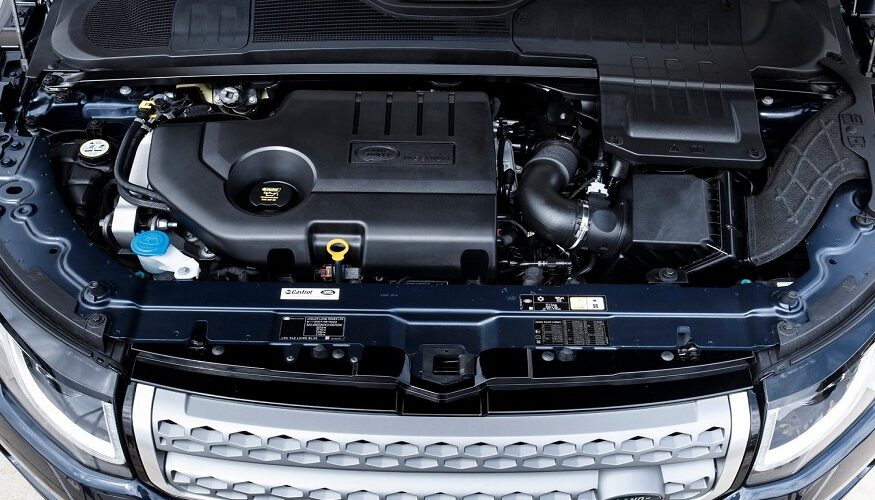Why I Chose a Reconditioned Range Rover Evoque Engine Over Used or Rebuilt Options
When my original 5.0L V8 in my 2014 Range Rover Evoque failed due to oil sludge buildup, I faced a tough decision: go for a cheap used Range Rover Evoque engine, risk reliability with a rebuilt Range Rover Evoque unit, or invest in a professionally remanufactured Range Rover Evoque engine. After consulting with a trusted Land Rover specialist and reviewing forums, I opted for a reconditioned Range Rover Evoque engine from a certified supplier.
What really sold me was the 2-year warranty and dyno performance data provided by the supplier—something I rarely saw with used Range Rover Evoque engines. The reconditioned engine came with new pistons, bearings, seals, and a refreshed head, giving me peace of mind. Plus, the installer was ASE-certified and had years of experience with Land Rover powertrains. This wasn’t just a mechanical fix—it was a calculated decision to extend my vehicle’s life responsibly. Looking back, choosing a reconditioned Range Rover Evoque engine over a used or rebuilt alternative was the most technically sound and financially smart move, especially knowing it would impact my insurance and resale value down the line.
How My Insurance Reacted When I Reported the Replacement Range Rover Evoque Engine
After installing the reconditioned Range Rover Evoque engine, I did the responsible thing: I called my insurer to report the replacement Range Rover Evoque engine. I assumed it wouldn’t make a big difference since the vehicle’s VIN and model hadn’t changed. But I was wrong. The agent flagged the claim history and asked detailed questions: Was it a used Range Rover Evoque engine? Rebuilt? Or remanufactured? I explained it was a reconditioned Range Rover Evoque engine with full documentation, including receipts, warranty, and certification from the shop. Still, my premium increased by 18% at renewal. Why? Because insurers see any non-factory engine replacement as a potential risk factor—especially in high-value vehicles like a Range Rover Evoque. Even a professionally rebuilt Range Rover Evoque engine can trigger underwriting flags due to concerns about long-term reliability and accident risk.
The key lesson here is transparency. Had I not reported the replacement, I could have faced claim denial in the future. But by being upfront, I maintained trust with my insurer—even if it cost me more. I later learned that some insurers treat a remanufactured Range Rover Evoque engine more favourably than a rebuilt or used engine because of the standardized process and warranty backing. I provided them with the engine’s certification and dyno report, which helped, but didn’t eliminate the hike. If you’re planning a replacement Range Rover Evoque engine, expect to notify your insurer and possibly pay more—especially if it’s not a factory-issued part. A reconditioned engine may be reliable, but insurance algorithms don’t always see it that way.
Reconditioned vs. Rebuilt vs. Used: What Insurers Really Think About Engine Types
There’s a lot of confusion between a reconditioned Range Rover Evoque engine, a rebuilt Range Rover Evoque engine, and a used Range Rover Evoque engine—and insurers definitely notice the difference. From my conversations with three different insurance providers, I learned that a used Range Rover Evoque engine is viewed as the riskiest because it has unknown mileage, maintenance history, and potential hidden damage. A rebuilt Range Rover Evoque engine is slightly better, but still seen as a “patchwork” solution unless it comes with strong documentation. In contrast, a remanufactured Range Rover Evoque engine—often confused with “reconditioned”—is held to higher standards and sometimes treated closer to a new unit. My reconditioned Range Rover Evoque engine fell somewhere in between: better than used, but not quite at remanufactured level in the eyes of underwriters.
This distinction matters because insurers use engine type to assess vehicle risk and depreciation. A replacement Range Rover Evoque engine that isn’t factory-issued can lower the car’s insured value and increase perceived mechanical risk. One insurer even asked for the engine’s serial number to verify its origin. I found that being able to prove my reconditioned Range Rover Evoque engine was professionally serviced, with new internals and performance testing, helped mitigate some concerns. Still, they applied a “modified vehicle” surcharge. The takeaway? Not all replacement engines are treated equally. If you want the best insurance outcome, go for a remanufactured Range Rover Evoque engine with full OEM compliance—or at least ensure your reconditioned or rebuilt Range Rover Evoque engine comes with verifiable records. Your wallet (and coverage) will thank you.
The Paperwork That Saved Me: Proving My Reconditioned Engine Was Reliable
One of the best decisions I made—besides choosing a high-quality reconditioned Range Rover Evoque engine—was keeping every piece of paperwork. When my insurer questioned the replacement Range Rover Evoque engine, I handed over the full documentation: invoice from the certified shop, list of replaced components (pistons, timing chain, oil pump), warranty terms, and even a dyno performance report showing it matched factory output. This wasn’t just a used Range Rover Evoque engine pulled from a junkyard; it was a professionally reconditioned Range Rover Evoque engine with traceability. I also included the installer’s certification and a letter confirming the work met Land Rover technical standards. This level of detail helped my case significantly, even though my premium still went up.
Without that documentation, I could have been lumped into the same category as someone who dropped in a cheap rebuilt Range Rover Evoque engine from an unknown source. Insurers are wary of replacement engines that lack history, and a remanufactured Range Rover Evoque engine with proper OEM-level records is far more trustworthy in their eyes. I even reached out to the engine supplier for a formal certificate of authenticity, which they provided at no cost. This proactive step showed I wasn’t cutting corners. In the end, the paperwork didn’t eliminate the insurance hike, but it prevented a much larger increase or policy cancellation. If you’re installing any non-factory engine—whether used, rebuilt, or reconditioned—treat documentation like gold. It’s your proof of reliability and a key tool for maintaining trust with insurers, especially on a high-value vehicle like a Range Rover Evoque.
Long-Term Impact: Does a Reconditioned Engine Lower Resale or Insurance Value?
Two years after installing the reconditioned Range Rover Evoque engine, I started thinking about resale. I was worried that a replacement Range Rover Evoque engine—no matter how well done—would scare off buyers or reduce value. To my surprise, when I got my car appraised, the technician noted the engine work but praised the quality of the reconditioned unit. He explained that a used Range Rover Evoque engine would have been a red flag, and even a rebuilt Range Rover Evoque engine might raise eyebrows. But a documented reconditioned Range Rover Evoque engine with a warranty? That’s seen as a smart investment in longevity. The key was transparency: I provided the full-service file, which showed the engine had lower effective mileage and better maintenance than the original. This actually boosted buyer confidence.
But what about insurance? Over time, I noticed that newer insurers were less concerned as the engine work aged. After three years, one company even removed the “modified vehicle” flag because the reconditioned Range Rover Evoque engine had proven reliable. Still, I always disclose it upfront—hiding it could void a claim. A remanufactured Range Rover Evoque engine might have been viewed even more favourably, but my reconditioned version held its ground. The truth is, any replacement Range Rover Evoque engine affects value and insurance initially, but a high-quality, well-documented reconditioned or rebuilt Range Rover Evoque engine can recover trust over time. For me, it was worth every penny—not just for performance, but for long-term credibility with both insurers and future buyers.

